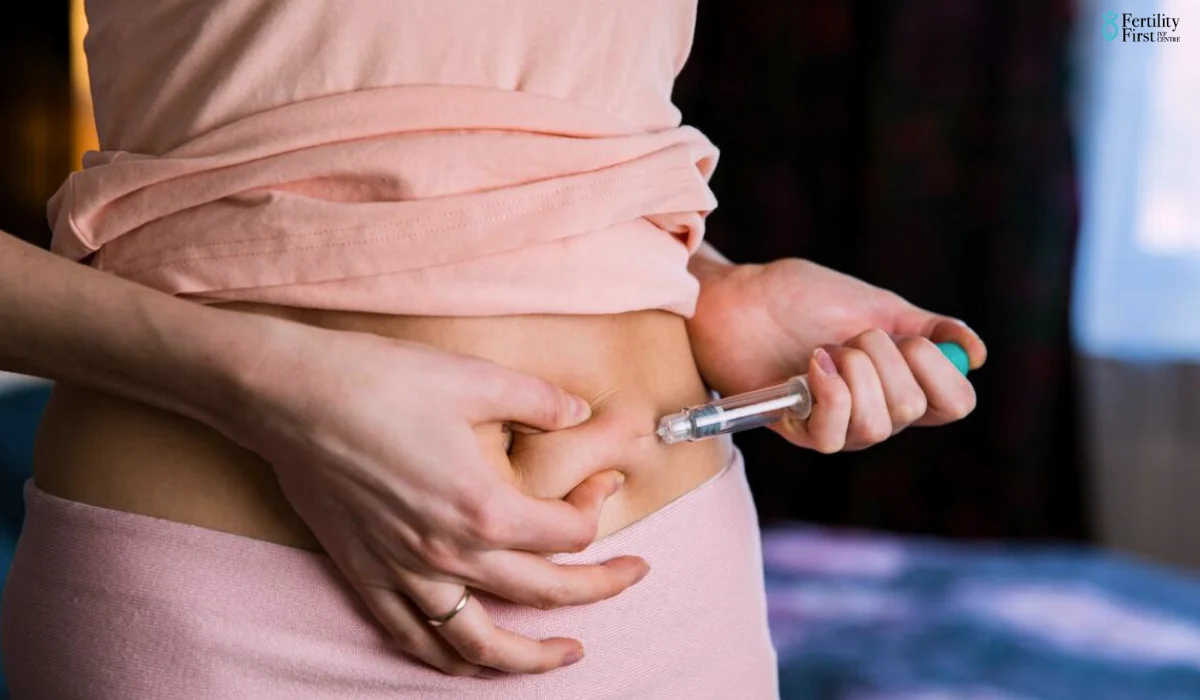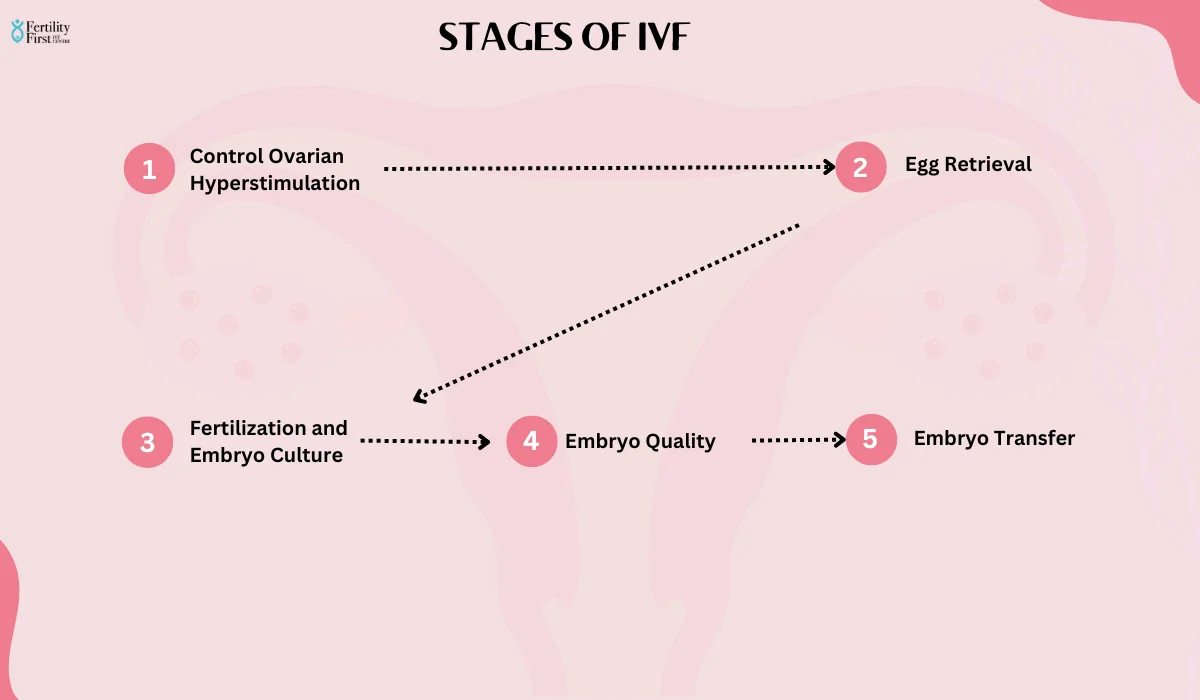IVF Stimulation Day By Day

The current article attempts to examine the stages of the IVF procedure (or cycle) with particular emphasis put on IVF stimulation and the day-to-day processes involved in a detailed, step-by-step manner. The concerned topic, “IVF Stimulation Day-by-Day”, also makes an additional effort to analyze the different stages of the IVF procedure to gain an in-depth understanding of the entire process as felt relevant to the current context.
IVF Stimulation
The IVF or ovarian stimulation typically involves the injection of medications into any or both of the ovaries for 8 to 14 days. It is the second stage in a fertility treatment like IVF and it works by stimulating the ovaries to produce as many mature eggs as possible to increase the chances of fertilization. This process is followed by the implantation of the fertilized egg back into the uterus to ultimately assist in the conception of a healthy baby.
It should be known here that the IVF-cum-ovarian stimulation is as complicated as the complexities involved in the otherwise natural reproductive cycle of a woman and can turn out to be stressful for those undertaking the procedure for the first time. It is also important to note here that since the IVF/ovarian stimulation is the second stage in the entire IVF procedure, this is succinctly preceded by fertility testing conducted in a fairly extensive manner. The purpose of fertility testing is to assess the baseline level of the hormones that will help the physician involved in determining and recommending the best suitable treatment regimen.
Factors Driving IVF Treatment
IVF is considered for those couples who have failed every possible attempt to conceive naturally, including routine treatment options, and when reports suggest impaired fertility. The popularity and the need for IVF treatment have significantly increased over the last two to three decades, and multiple factors have driven couples to opt for the same. Of note, these have included the following:
Lifestyle changes: Increased stress among married couples drastically impacts their reproductive health, which if not addressed appropriately, can significantly hinder their chances of conceiving.
Pursuit of higher education: Contrary to the olden days when girls used to marry as young as 18 and bear offspring by reaching 20 years, this has gradually shifted to the point of marrying as late as 30, thus pushing the age of conception further. Note here that the female acquires a limited number of eggs at birth, and this number subsequently reduces by the time she reaches 30 or 35 years of age, diminishing her chances for ovulation. Though most women do not have ovulation-related issues, this indicates that some do, prompting them to seek IVF treatment.
Career orientation: Couples seeking career development rarely find time to even think about conception, save for communicating with each other regarding the same. By the time they seriously start considering (after acquiring a good amount of savings), they are too late due to developing fertility issues.
In addition to these, age and multiple comorbidities start to affect a female body, including hypertension, weight gain, diabetes, etc., these tend to cause significant hormonal changes, thus disrupting fertility.
Stages of IVF

The IVF consists of the following stages with explanations provided for each
Control Ovarian Hyperstimulation
COH, as it is otherwise called, consists of injecting the same medications often administered to women with anovulation. However, as its name suggests, it actively stimulates ovulation in a controlled manner, wherein healthcare providers inject drugs/medications to stimulate the development of multiple mature follicles and trigger the release of eggs, thus increasing/enhancing pregnancy rates for addressing various infertility issues. Since healthcare providers perform COH alongside intrauterine insemination, the procedure achieves a high success rate at this stage
Egg Retrieval
Extraction of eggs from the ovaries takes place in this stage. also involves the manual combination of sperm stored in the lab. Here, the follicles are aspirated through a needle under transvaginal ultrasonographic guidance. This procedure usually requires patients to be sedated intravenously in a surgical suite.
Fertilization and Embryo Culture
The retrieved eggs are collected in the lab dish, where they are combined with 50,000-100,000 sperm. Standard insemination, otherwise called, is usually carried out after determining that the sperm has met all necessary parameters. Typically, we assess fertilization after 16-18 hours, and then we culture the embryos. We pass the fertilized eggs (zygotes) through a specially formulated culture medium to support their growth. It takes about two to three consecutive days to retrieve the zygotes and culture them further in yet another specially designed culture medium called the blastocyst culture to improve the chances for the successful implantation of the zygotes or embryos. However, we should only implant a few back into the uterus to prevent multiple pregnancies.
Embryo Quality
Determining embryo quality is critical to transferring and implanting the right embryo in the uterine wall. Hence, among the various known methods or criteria to determine embryo quality, the one that stands out is the grading system utilized in the lab.
Embryo Transfer
The last stage in the IVF procedure is embryo transfer, which either happens on the third day of the oocyte retrieval or the fifth day after going through the blastocyst culture. Also, described as a cleavage stage, this process involves the fertilized eggs, i.e., the embryo, to be loaded into a catheter and passed vaginally to be lodged/implanted safely into the uterus.
Related: Secondary Infertility- Causes, Signs, Diagnosis, and Treatment Options!
IVF Stimulation Day by Day
Having elaborately discussed the processes involved in the IVF procedure, this has further initiated the need to examine what it looks like for IVF stimulation to be conducted on a routine basis. Going from here, a day-to-day account of the IVF stimulation has been provided in a tabular format below.
Day 1: Beginning of the Menstrual Cycle
One needs to undergo a baseline evaluation, including blood tests and an ultrasound to check hormone levels and the number of follicles in one’s ovaries.
Day 2-4: Stimulation of the Ovaries
Daily injections of fertility drugs to stimulate the production of ovaries occur on these specified days, i.e., from day two to day four. One may need to continue these injections for eight to 14 days depending on one’s response to these fertility drugs.
Day 5-7: Monitoring
Regular monitoring appointments are carried out on these days to check for follicular development and hormone levels. Of note, blood tests and ultrasounds are also included in these appointments
Day 8-10: Trigger shot
One will receive trigger shots to prepare one’s body for ovulation once it is noted that one’s follicles have acquired a certain size.
Day 11-12: Egg Retrieval
About 36 hours after receiving the trigger shot, eggs are retrieved from the ovaries. This, however, requires an anesthetic administration for the patient’s comfort throughout the procedure because of the needles utilized to aspirate the eggs.
Day 13-14: Fertilization
Insemination or intracytoplasmic sperm injection (ICSI) is what this procedure is referred to as, involves the fertilization of the retrieved eggs with the sperm on a special lab dish.
Day 15-19: Embryo Culture
Monitoring the fertilized eggs/zygotes requires a lengthy period, say four days as specified, to let them develop into embryos. The embryos are further quality-tested and graded based on their development.
Day 20-21: Embryo Transfer
More than one embryo is transferred on the 20th or 21st day via a thin and flexible catheter. Unlike the egg retrieval stage which requires anesthesia, embryo transfer does not need one because this process is quick and painless
Day 22-30: Luteal phase and test for pregnancy
One subsequently enters a luteal phase after the embryo transfer, i.e., the time between transfer and the pregnancy test. Progesterone supplements are given during this time to assist in embryo development. Following this and two weeks later, a pregnancy test will likely confirm the pregnancy, suggesting that the IVF procedure is successful.
For a woman to undergo IVF stimulation, it is important that she be on her menstrual cycle to effectively assess her baseline hormone levels, as well as the number of follicles she has during this time. It could well be delineated that the IV stimulation lasts eight to 14 days depending on her response to the fertility medications. The remainder of the days involving the fertilization, grading, and transfer-cum-implantation of the formed embryos back to the uterus through a transvaginal approach leads to the luteal phase in which progesterone supplements are provided to assist in further embryo development, thereby marking the success of the IVF procedure as could be ideally stated.
Advantages and Disadvantages of the IVF Procedure
| Advantages | Disadvantages |
| High success rate | Highly Expensive |
| Both men and women can overcome fertility problems. | Risks of multiple pregnancies occurring. |
| Rare chances for miscarriage | Higher chances for failure based on multiple factors, especially age. |
| Couples of any age can try | Developing various health issues from repeated (and failed) IVF attempts. |
| Easy availability of donor eggs/sperm | Birth of premature baby/ies |
| Selection of perfect timing to undertake the procedure. | May require fewer eggs to be collected based on quality and grading |
Conclusion
The article, “IVF Stimulation Day-by-Day” has made a deliberate attempt to illustrate the process of ovarian stimulation through the in-vitro fertilization procedure. This, however, required the need to understand the procedure itself before noting the stages, better to say, the day-to-day infusion of IV stimulation for 8 to 14 days, starting from the day when a woman begins to have her menstrual cycle to the point she reaches her next ovulation date, that usually comes 14 days after the previous menstruation. Lastly, the advantages and disadvantages of the IVF procedure were specified to understand the things to expect from the procedure.
